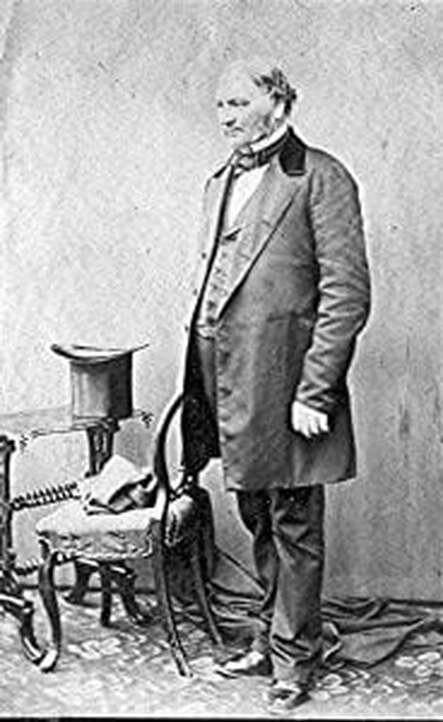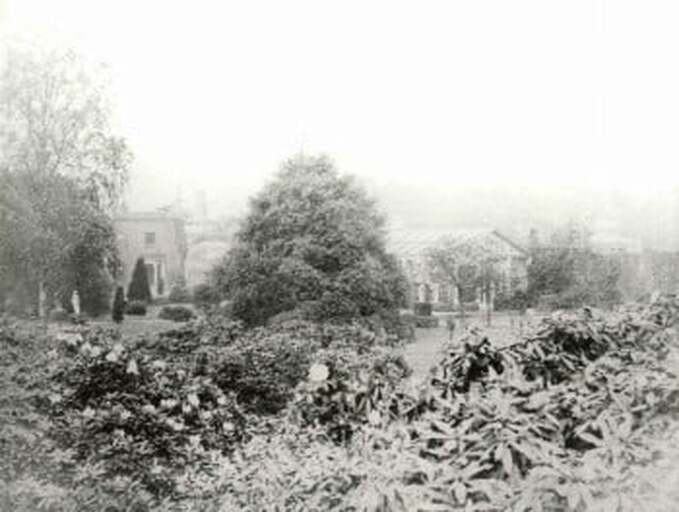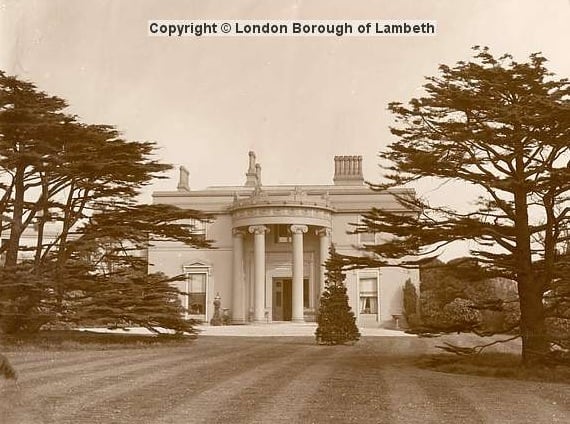John Tredwell, a railway contractor. Local legend tells how he started life as a “humble navvy” and rose to a man of great wealth through his contracting work.
As a reminder of his humble origins he is said to have kept his pick and shovel in the hallway at Leigham Court to serve as a constant reminder to him of his unostentatious early life! Herbert Baldwin, the author of “Streatham Old and New”, came from a distinguished publishing family.
His father, Edward Baldwin moved to the area in 1859, where he resided in a large house at the top of Mitcham Lane, opposite Streatham Green. Edward was a noted newspaper proprietor, at one time being the owner of “The Daily Herald” and part proprietor of “The Standard”. Herbert remembered visiting Leigham Court on one occasion and mentions how he was standing admiring a “very fine painting of a man in ordinary working clothes” when John Tredwell approached him “and with natural pride explained that it was no effect of the painter`s imagination, but a portrait of himself.”
Behind the house was a large formal garden with a central fountain with orchards beyond. The grounds contained a large lake, euphemistically called the Fish Pond, complete with a boat house and a small island for rowers to head for, which was a popular spot for summer picnics.
At the south eastern extremity of the estate John Tredwell built a tall tower as an observation platform, which was known locally as “Tredwell`s Folly”. From the top of the tower panoramic views of the surrounding countryside were obtained. Tall trees and shrubs screened the grounds from public view and a pair of large entrance gates stood on Streatham Hill behind which was a small lodge where the gatekeeper lived. A long carriage drive led from Streatham Hill to the house and neighbouring stables.
The railway tunnel which passes under the grounds of Leigham court was constructed in the mid 1850s by Tredwell so that his estate would not be scarred with a large railway cutting passing through it. Streatham Hill Station which was located near the Streatham Hill entrance to his property, was the first railway station to be built in Streatham. It was opened by the London Brighton and South Coast Railway (LBSCR) on 1st December 1856 as Streatham Station but changed its name to Streatham and Brixton Hill Station in 1868, becoming Streatham Hill Station the following year. The building remains much as it was when first erected and is one of the last stations of its type to survive in London.`
John died in December 1875 leaving about £200,000. He married his first wife Elizabeth Skilliter 9th November 1824 in Elizabeth died 1869 at Leigham Court. His second wife Maria Cox he married 1870. Maria was with the family before Elizabeth died. No children from either marriage. In his Will (held) John leaves bequests to numerous Skilliters, members of his first wife`s family and also to his plentiful nieces and nephews. He is buried West Norwood Cemetery
( Bradley Family and John W Brown)




